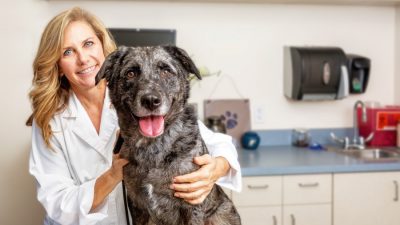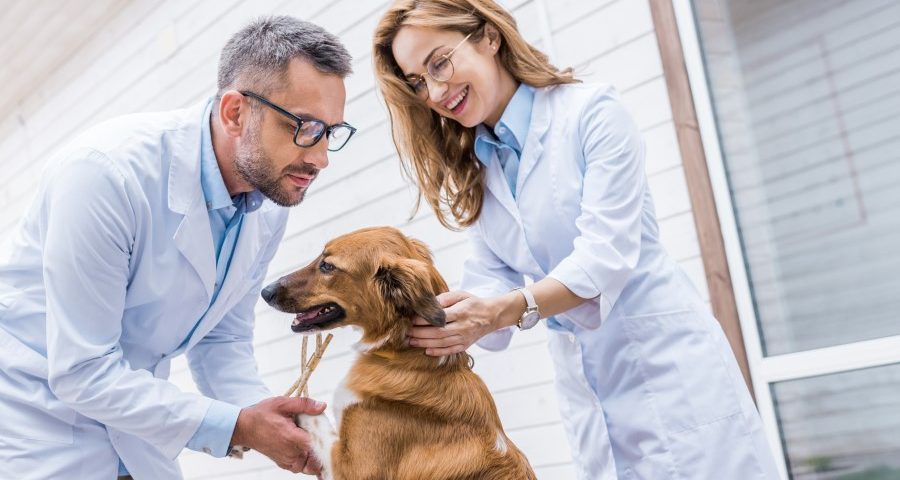
Veterinary Trends to Watch in 2023
November 29, 2022
Best Mobile Apps for Veterinarians
December 20, 2022Hiring Veterinary Technicians:
How to Hire the Right Candidate
The hiring process is always a challenge, especially in a tight labor market. From sorting through resumes and interviewing candidates, finding a long-term team member can be difficult and time-consuming. Veterinary technicians are a critical part of your practice—how can you find the right candidate? What characteristics to look out for? Here are some guidelines to help you through the process.
Why You Should Hire a Veterinary Technician
According to the Bureau of Labor Statistics, the job market for veterinary technicians is projected to grow 20% between 2021 and 2031. This is a much faster growth rate when compared to the average for all occupations. They are also projecting around 15,500 job openings per year for these occupations.
In case you are a non-veterinarian opening a vet practice, you might not be fully aware of the benefits a veterinary tech can bring to your team. A certified veterinary technician (CVT) or licensed veterinary medical technician (LVMT) has a scope of responsibilities such as laboratory work, admissioning anesthesia, assisting during surgeries. And not only that, but vet technicians are regularly soothing stressed animals. More often than not, they are also reassuring pet owners about the procedures and talking them through the necessary steps.
To become a veterinary technician, you must hold a degree from an American Veterinary Medical Association (AVMA) accredited college with an associate’s degree in veterinary technology. In addition to this formal education, you must also obtain a license by passing the Veterinary Technician National Exam (VTNE).
However, in Alaska, California, and Wisconsin, you can become eligible for VTNE though completing an alternative degree program or by getting on-the-job training. Also, if you are in Massachusetts, a state licensure isn’t mandatory, but they do advise candidates to get certified through a Massachusetts Veterinary Technician Association.
[READ MORE] How to Improve Your Veterinary Practice Efficiency in 2023
Responsibilities of a Veterinary Technician
In order to set expectations for your new veterinary technician, you need to understand what you’re looking for. How will your new employee strengthen your team? Certain tasks can be entrusted to veterinary assistants who don’t hold licenses, but are trained to handle animals, and can also help with office duties.
A veterinary technician is a trained individual who can undertake a larger scope of daily tasks at a veterinary practice, including:
- Examining the animal before veterinarian;
- Documenting animal records;
- Understanding animal behavior;
- Doing blood work and other lab tests;
- Preparing equipment before examinations and surgeries;
- Administering anesthesia;
- Assisting veterinarian during the medical procedures;
- Communicating with pet owners;
- Offering advice.
Of course, these tasks vary from practice to practice, and can include more or less specific responsibilities—the important takeaway is to begin your search for the right candidate with a list of set goals in mind.
[READ MORE] 5 Easy Ways to Build Veterinary Client Loyalty for Your Practice
How to Hire the Right Candidate
After you assess the needs of your practice, you can start thinking about the personal qualities you’d like to see in a potential candidate. No matter if you are searching for an experienced team player or an enthusiastic beginner fresh out of college, you’ll want someone who can fit with your established staff. Hire a person for their adaptability and their fast-learning skills.
Due to the nature of the work, emotional intelligence is critical—you will want a veterinary technician who can empathize with both animals and their owners.
You’ll also want a good listener and an excellent communicator. Communication is a core function of this job, which includes constant interaction with team members and pet owners. In the end, you want to enrich your team with an efficient person who brings new ideas to the table and raises the standards of animal care.
Other Similar Roles in Veterinary Practices and Clinics
Depending on the size of your practice or clinic, you may need to consider growing your staff with additional hires. Here are other veterinary roles that can further help in specializing your services and veterinary care.
Kennel Technician
If you have a kennel facility, you may need to consider hiring a dedicated kennel technician. Their primary role is to provide care for animals in kennels—this can include feeding, walking, or giving medication. Despite the title, kennel technicians are working with both dogs and cats, and in certain cases with other types of animals, such as birds, rodents, and reptiles.
Veterinary Technologist
For a more scientifically aligned position, you’ll need a veterinary technologist. Their primary focus is on research; laboratory work is their forte. A vet technologist is examining blood and other body fluids, researching medications, and examining tissues. Usually, people don’t differentiate between veterinary technicians and technologists, but the latter ones are more dedicated to lab work, especially for breakthrough research purposes.
Veterinary Assistant
A veterinary assistant is the jack-of-all-trades member of the veterinary world. They can have a wide range of responsibilities, from office to kennel work. They don’t have to hold a license in order to help out veterinarians or veterinary technicians in their less complicated daily tasks. Veterinary assistant is usually the first step towards becoming a vet tech or a vet.
***
Are you planning on buying veterinary practice and building your trustworthy veterinary staff? Contact PS Broker for guidance through the buying process. Check out our listings of veterinary practices for sale and find the perfect match.


